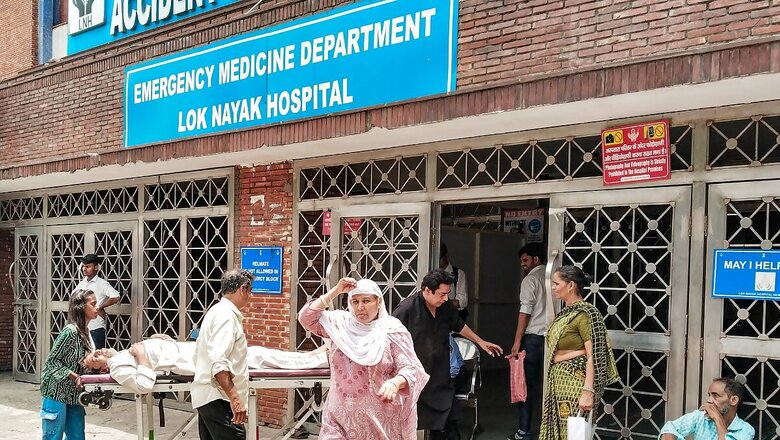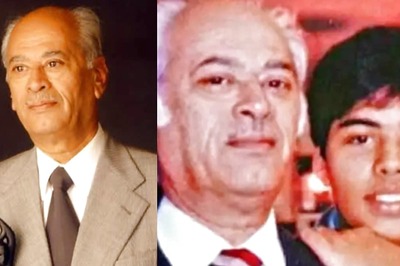
views
As severe heatwave continues to wreak havoc with several deaths being reported across India, the Union Health Ministry on Wednesday decided to establish special heatwave units in all central government hospitals.
On Tuesday, Union Health Minister JP Nadda reviewed the heatwave situation and assessed the preparedness of central government hospitals. He also instructed officials to ensure that all hospitals are equipped to provide the best possible healthcare to those affected by the heatwave.
According to the government data accessed by News18, 110 people have died of heatstroke in India so far and Uttar Pradesh is the worst-affected state with 36 deaths, followed by Bihar, Rajasthan and Odisha. However, the actual number is likely much higher as heat-related deaths are often under-reported in rural areas.
For instance, CNN reported the deaths of 24 people in Delhi-NCR, Bihar Jharkhand, and Rajasthan towards the end of May. It also reported the deaths of at least 33 election workers in a single day in Uttar Pradesh. Another report highlighted 60 deaths in Bihar within 24 hours on May 31. Reports also said that more than 10 people lost their lives in Delhi-NCR in the last three days and at least 12 are on life support.
Unprecedented Rise in Heat-Related Complaints
According to doctors treating patients at private hospitals, heat-related issues become concerning when temperatures exceed 45 degree Celsius.
Dr Reshu Agarwal, consultant for internal medicine at Manipal Hospital in Pune’s Baner, has been diagnosing 25 to 30 patients every week with heat-related illnesses. “The number of cases is definitely higher as compared to previous years. Many more people are falling sick and coming with severe symptoms such as high fever, multiple episodes of loose stools and vomiting. Also, people are taking longer time to recover.”
Dr Vimal Kumar Nakra, director of internal medicine at Max Super Speciality Hospital, Patparganj, listed a few symptoms hinting at heat-related illnesses.
He said patients have dry warm skin, headache, dry tongue, increased thirst, muscular cramps, and confusion with decreased urine output. Other symptoms include fever, nausea, vomiting, loose stools, pain in the abdomen and dizziness. Critical cases are presented with confusion, irritability, difficulty in maintaining balance and loss of consciousness.
Generally, the experts have noted, the patient pool consists of individuals who are elderly or with pre-existing conditions such as cancer, chronic obstructive pulmonary disease (COPD), and heart and kidney diseases as they are more vulnerable to heat-strokes.
Dr Gaurav Jain, senior consultant for internal medicine at Dharamshila Narayana Hospital in Delhi, has witnessed around 10 patients with serious pre-existing conditions requiring ICU care in the last 10-12 days. “This includes three patients with cancer, two with kidney problems, and one with heart problems.”
“Fortunately, no young and healthy patients affected by the heat have required ICU care so far,” he said.
Experts explained that critical patients generally arrive in hypovolemic shock, marked by a significant drop in blood pressure and oxygen levels. Hypovolemic shock is a risky condition which happens when the human body suddenly loses a lot of blood or fluids from the body.
Dr Arvind Aggarwal, senior consultant at Delhi-based Sri Balaji Action Medical Institute, told News18 that his outpatient department (OPD) is seeing around 10 patients daily with mild to moderate symptoms such as dehydration, diarrhea, and mild fever. “Overall, the OPD has managed 70-80 mild to moderate cases in the last 10 days.”
“In the past week, we treated 5-6 critical cases in the inpatient department (IPD) due to severe heat-related complications, including hypertension and heart problems.”
Faridabad-based Amrita Hospital is witnessing approximately 15-20 cases of heat-related cases every week.
Dr Sakshi Singh from the hospital’s internal medicine department told News18 that there’s a noticeable rise in cases among vulnerable populations, such as the elderly, young children, and those with pre-existing health conditions. “Also, more cases are being reported among outdoor workers, such as construction workers and agricultural labourers.”




















Comments
0 comment